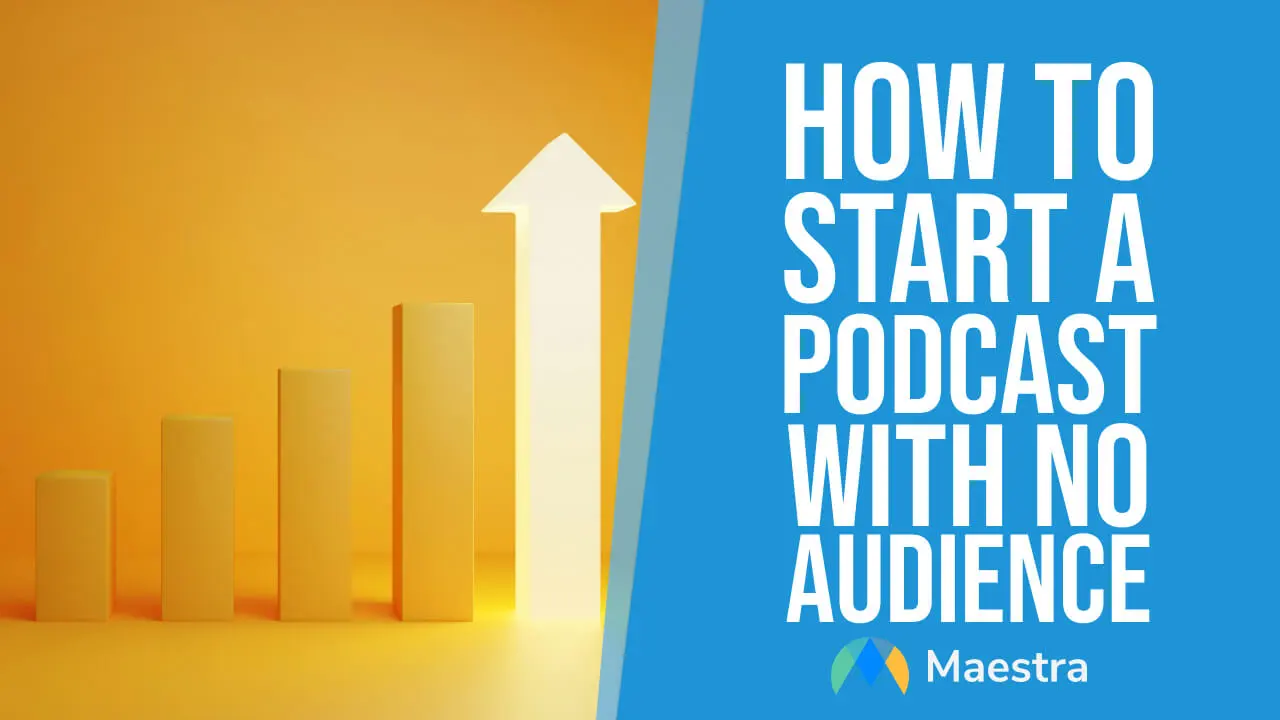Step by Step: How to Start a Video Podcast
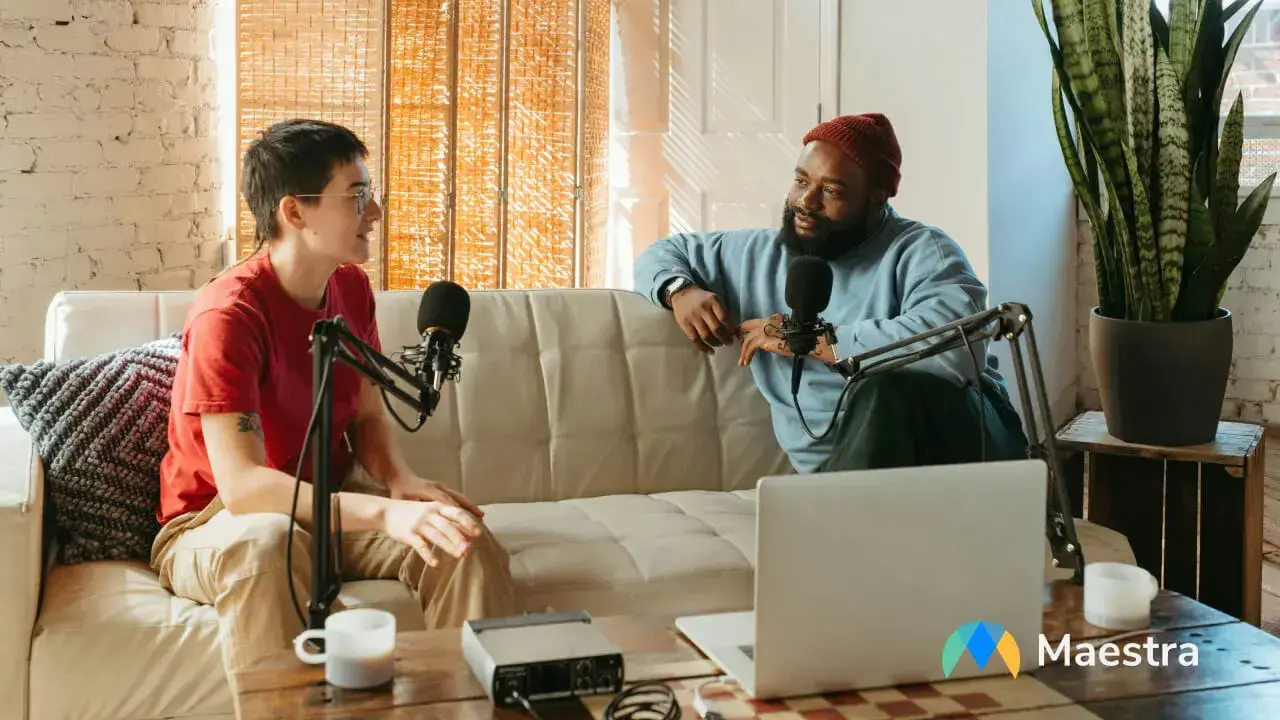
Video podcasting is an exciting way to engage audiences, combining the storytelling power of traditional audio podcasts with the visual impact of video. With platforms like YouTube, Spotify, and Vimeo increasingly supporting video podcasts, creators are leveraging this format to expand their reach and enhance audience interaction.
Whether you are an experienced podcaster or new to video podcasting, you can find valuable information about how to set up a video podcast, how to reach new audiences and how to create consistent growth for your channel in this article.
Taking it a step at a time is an easier way to create a solid foundation to build upon.
Step by Step: Making a Video Podcast
First off, taking it one step at a time is a great way to build a foundation to build upon.
Thoroughly inspect how to go about each step, and you should find yourself in the end with a solid strategy and good content that has the potential for incredible growth.
1. Planning Your Video Podcast
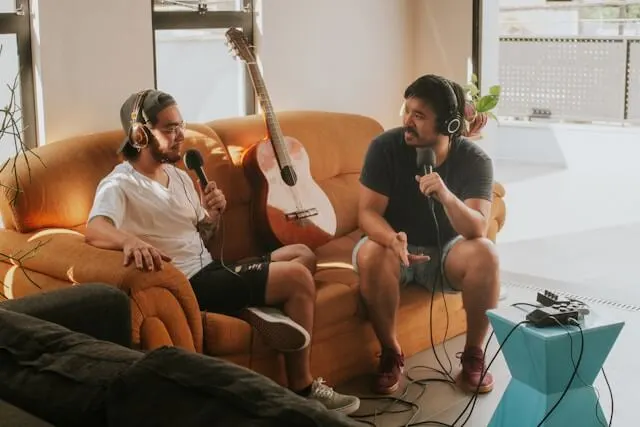
Before you start recording, a solid plan is essential. A well-structured podcast will not only keep your episodes engaging but also ensure consistency across your content.
Choosing Your Topic and Audience
Your podcast should revolve around a topic that excites you and provides value to listeners. Whether it’s business, entertainment, technology, or personal development, picking a niche helps establish your brand. It’s also crucial to define your target audience—understanding their interests and preferences will shape your content direction.
Reach Any Audience in the World
Selecting the Right Format
The format of your podcast plays a huge role in audience engagement. Common formats include:
Choose a format that matches your strengths and aligns with your content goals.
Structuring Your Episodes
An effective episode has a clear structure to maintain flow. A simple but engaging format includes:
2. Setting Up Your Recording Environment
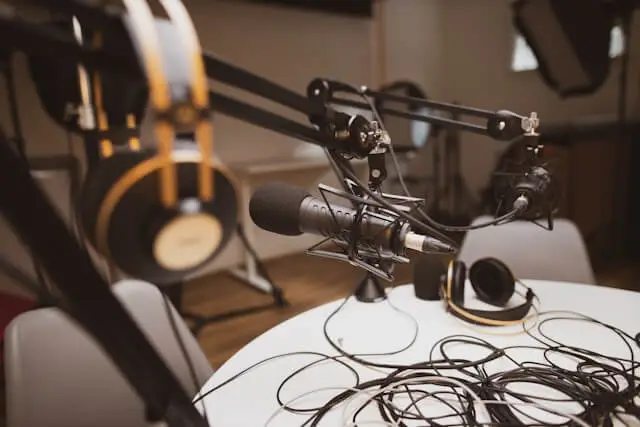
Your recording space significantly impacts the quality of your video podcast. A well-prepared environment enhances professionalism and audience experience.
Choosing the Right Location
Select a quiet, controlled space with minimal background noise and distractions. If possible, dedicate a specific spot for recording to maintain consistency. Avoid echo-heavy rooms and ensure the setting matches the theme of your podcast.
Optimizing Sound Quality
Good audio is just as crucial as video. To improve sound quality:
Setting Up the Background and Lighting
A clean, aesthetically pleasing background enhances the professional look of your video podcast. Some podcasters prefer a minimalist approach, while others use bookshelves, artwork, or branding elements for a personalized touch. Lighting is equally important—natural light works well, but if filming indoors, softbox or ring lights help create even, flattering illumination.
3. Essential Equipment and Software
To produce a high-quality video podcast, investing in the right equipment is key.
Microphones
Audio clarity is non-negotiable. While built-in laptop mics are convenient, they often produce poor sound quality. Instead, opt for:
Cameras
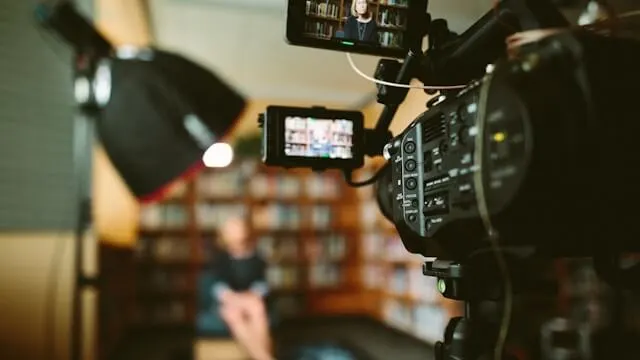
A high-resolution camera enhances the viewing experience. Beginners can start with a quality webcam, while more serious creators may prefer a DSLR or mirrorless camera for superior image quality. Ensure your camera can record in at least 1080p HD for clear visuals.
Lighting Setup
Proper lighting eliminates shadows and enhances clarity. Soft, diffused lighting—such as LED panel lights or ring lights—ensures a well-lit face and a professional-looking video.
Recording & Editing Software
There are several tools available for capturing and refining your podcast:
Accessibility & Localization Tools
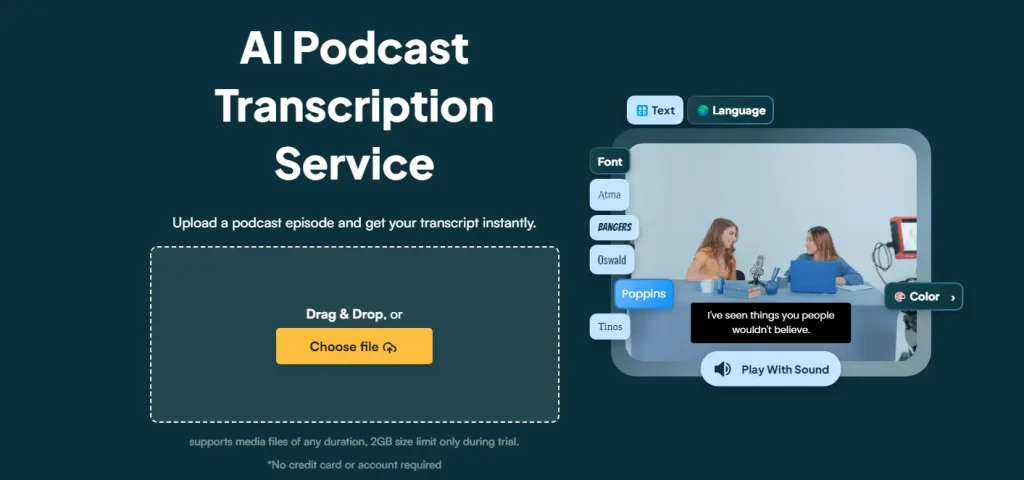
To ensure that your video podcast has a wider reach, you need accessibility & localization tools such as a podcast transcription service. Transcriptions can be beneficial for video podcasts in terms of SEO & searchability.
In addition, a live captioning tool can be exceptionally great in more than one way. If your video podcast is live, you can provide your audience with live captions and have an accurate transcript ready when the episode is over.
4. Recording Your Video Podcast
With your setup in place, it’s time to record. While the process may seem daunting at first, following a few key steps can make it smoother.
Before Recording
During Recording
5. Editing and Post-Production
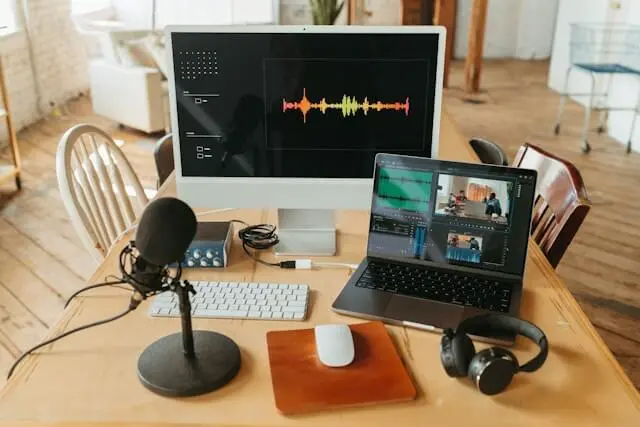
Editing transforms raw footage into a polished final product. The level of editing depends on your preferred style—some podcasters keep it raw, while others heavily refine their content.
Steps of Editing
6. Publishing and Distribution
Once your episode is edited, it’s time to publish and distribute it.
Choosing a Platform
The most popular platforms for video podcasts include:
For those looking to distribute audio-only versions, use podcast hosting services like Libsyn or Podbean to syndicate content to Apple Podcasts, Spotify, and Google Podcasts.
Optimizing Metadata
When uploading, optimize your title, description, and tags for better discoverability. Create an eye-catching thumbnail and write a compelling episode description that includes relevant keywords.
7. Promoting Your Video Podcast

Producing great content isn’t enough—you need to promote it effectively.
Promotion Strategies
A consistent upload schedule also helps build a loyal audience.
8. Monetization Strategies
If you’re looking to generate income from your video podcast, there are multiple ways to do so.
Good Video Podcast Examples & Inspiration
If you’re new to video podcasting, looking at successful examples can provide valuable insights into what works. From production quality to engaging formats, the best video podcasts showcase creativity, consistency, and a strong connection with their audience. Below are some outstanding video podcasts that you can take inspiration from.
1. The Joe Rogan Experience
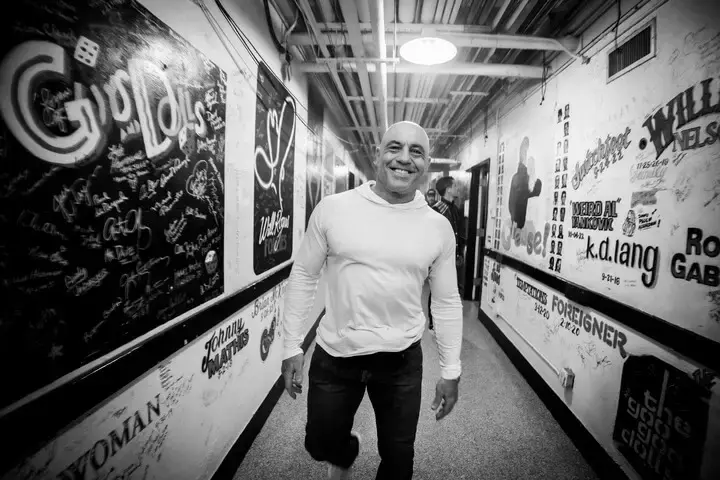
One of the most well-known video podcasts, The Joe Rogan Experience combines long-form interviews with high-quality video production. Rogan’s relaxed and conversational style makes his guests comfortable, leading to in-depth discussions on a wide range of topics. If you’re considering an interview-based podcast, this is a great example of how to keep conversations engaging.
Insightful Takeaways:
2. The Diary of a CEO – Steven Bartlett
Steven Bartlett’s The Diary of a CEO is a perfect example of a well-produced, high-quality video podcast. It features deep, introspective conversations with business leaders, celebrities, and thought leaders. The minimalist aesthetic, excellent lighting, and crisp audio create a visually polished podcast that feels premium.
What to Learn:
3. The Colin and Samir Show
The Colin and Samir Show is a fantastic example of a well-produced video podcast that blends interviews, industry insights, and engaging storytelling. Focused on creators and the digital media space, the show features high-quality production, strong branding, and a multi-camera setup that keeps the content visually dynamic. Their approach to storytelling and research-driven discussions makes the podcast both entertaining and informative.
Takeaways:
4. Hot Ones – Sean Evans
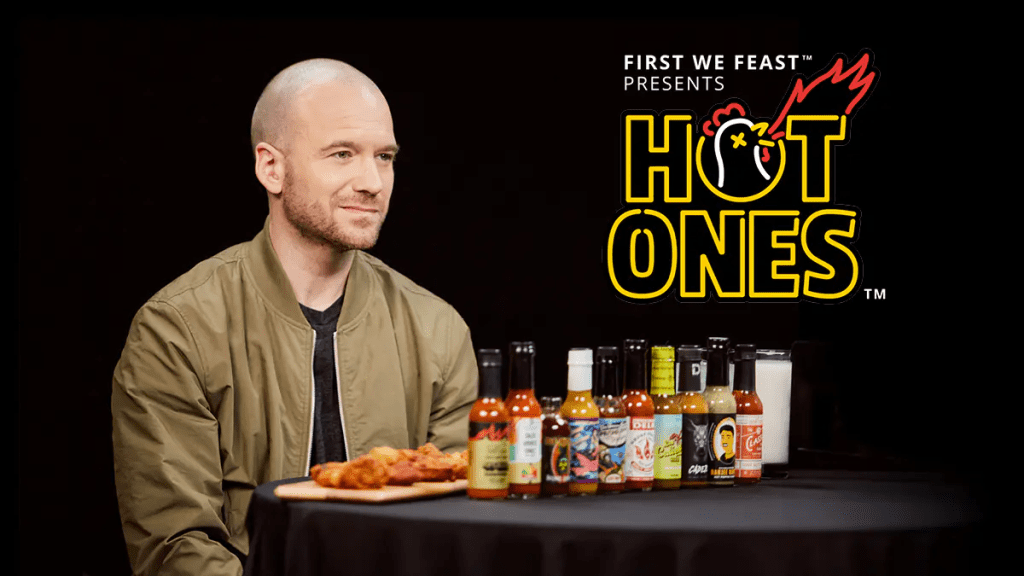
While Hot Ones isn’t a traditional podcast, it serves as a great inspiration for video podcasters looking to add a unique twist to interviews. Hosted by Sean Evans, the show combines casual yet deep conversations with a fun challenge—eating progressively spicier hot wings. The format keeps guests engaged and allows for organic, unscripted moments that make each episode entertaining.
A Different Approach:
5. On Purpose with Jay Shetty
Jay Shetty’s On Purpose is a motivational and personal development podcast that features guests from various backgrounds. The podcast excels in storytelling and emotional depth, often featuring high-quality, well-lit close-up shots that create an intimate connection with the audience.
Takeaways:
6. SmartLess – Jason Bateman, Sean Hayes, & Will Arnett (YouTube Version)
While SmartLess started as an audio podcast, its YouTube version offers a behind-the-scenes look at the hosts’ interactions. The natural chemistry between the three hosts and their unscripted humor make it an entertaining watch.
Takeaways:
How to Take Inspiration from These Podcasts
If you want to create a compelling video podcast, here are a few lessons to apply from these successful examples:
By studying these top podcasts and integrating their best practices into your own, you can create a unique and compelling video podcast that attracts a loyal audience.
Frequently Asked Questions
1. How to create a video cast?
To create a videocast, plan your content, set up a camera and microphone, and record your episode in a quiet space with good lighting. Edit the footage using video editing software, then upload it to platforms like YouTube, Spotify, or Vimeo for distribution.
2. How much do video podcasters make?
Video podcasters can earn anywhere from a few hundred dollars to millions per year, depending on their audience size, sponsorship deals, YouTube ad revenue, and other monetization strategies. Established video podcasters with large followings often generate income through brand partnerships, Patreon, and merchandise sales.
3. What is the difference between a podcast and a videocast?
A podcast is typically an audio-based show, while a videocast (or video podcast) includes both audio and video elements. Podcasts are traditionally consumed via platforms like Spotify or Apple Podcasts, whereas videocasts are often uploaded to YouTube or Vimeo for a more visual experience.
4. How to make a podcast video free?
You can create a video podcast for free using basic tools like a smartphone camera, free recording software (OBS Studio, Zoom), and free editing apps (DaVinci Resolve, iMovie). Platforms like YouTube and Spotify allow you to upload your videocast at no cost.
5. How do you create a video podcast?
A video podcast requires a good microphone, camera, and lighting setup. Record your episodes using video conferencing software (for remote guests) or a DSLR/webcam setup. After editing, publish your podcast on both video-based platforms like YouTube and traditional podcast directories that support video.
6. How do I turn a podcast into a video?
To convert an audio podcast into a video, you can add visual elements like static images, waveform animations, or relevant B-roll footage using video editing software. Tools like Headliner and Descript allow you to create engaging video versions of audio podcasts with minimal effort.
7. Can a podcast be video only?
Yes, a podcast can be video-only and still be considered a podcast if it follows the same episodic format. Many creators release their content exclusively on YouTube or other video platforms, skipping the traditional audio podcasting model altogether.
